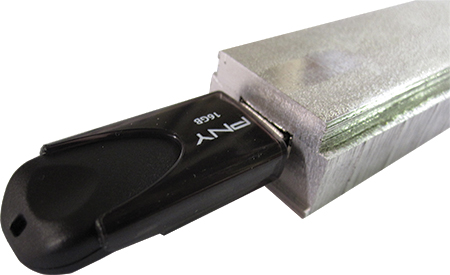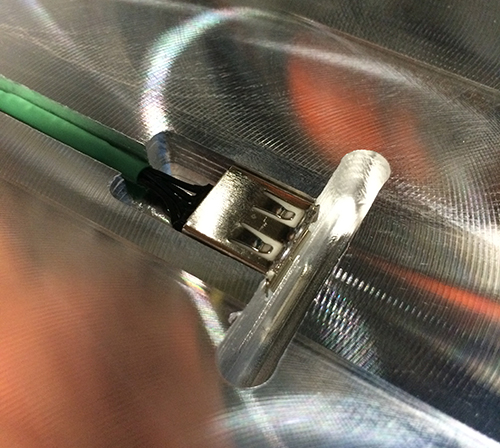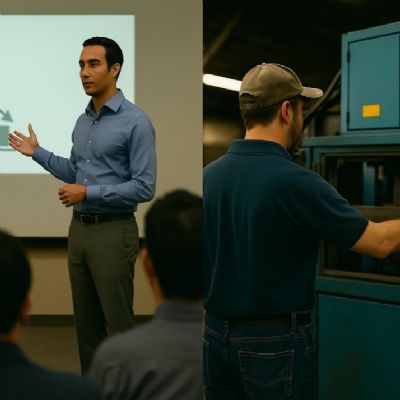Embedding Fiberoptics
 |
| Embedded sensors placed in small pockets machined into the UAM part can, in some applications, employ simple square USB-style connectors (shown) for getting the signal wire out of the metal part. In other more aggressive scenarios, off-the-shelf connectors can be welded in place or bolted using a gasket, and then soldering final connections after the UAM part is complete. |
While the notion of custom-building new types of materials appears groundbreaking and flush with new opportunities for OEM customers (primarily aerospace), those applications represent only about 20 percent of Fabrisonic’s book of business.
Note: The firm primarily serves as a job-shop contractor, although it does build and sell machines with work envelopes as large as 6 by 6 by 3 ft. to allow customers to perform their own inhouse UAM operations. Its real bread and butter is within the arena of fiberoptic Bragg grating (FBG). “Here, we embed fiberoptic cable (20 to 30 m long) into grooves machined in the UAM buildup, then weld over it,” explains Fabrisonic sales engineer Hilary Johnson. “Microscopic etches within the cable provide a gauge for monitoring strain, by sensing reflections of light passing through the cables. We’re doing a lot of work in this area for aerospace companies, as well as for NASA Langley Research Center, for long-term product-health monitoring.”
Complex Geometries
The third link in the Fabrisonic UAM chain is in creating complex internal features within 3D-printed parts, leveraging the additive-subtractive nature of its technology. Examples include wave guides where UAM creates 3D geometry deemed by Fabrisonic to be impossible to make using CNC machining, and heat exchangers.
“Here (heat exchangers) we start with a baseplate,” continues Johnson, “and weld thin pieces of foil to build up a part contour, and then use the milling machine’s cutters to develop complex exterior shapes and internal features. We can develop coolant paths in the heat exchangers that are difficult or impossible to create with any other manufacturing process. And we can hold exceptionally tight tolerances—±0.0005 in.—and provide surface finishes as fine as 12-micron Ra.
More Information …on the ultrasonic additive manufacturing process and its applications is available on the Fabrisonic website. Here’s an infographic that details “smart sensing” applications enabling structural health monitoring: http://fabrisonic.com/embedding-fiber-optics-for-structural-health-monitoring. Here’s how Fabrisonic 3d-prints layers of tantalum to provide radiation shielding for applications such as satellites: http://fabrisonic.com/3d-printing-radiation-shielding. |
“We also can build up layers of different materials—such as aluminum, copper and steel,” she continues, “and achieve geometries that cannot be created by traditionally bending copper tubing. In our UAM parts, the copper serves to conduct heat out from the product, while we can selectively use aluminum to minimize weight. We’ve made parts with comparable thermal conductivity that weigh two-thirds less than do conventionally manufactured components.”
“We also can embed sensors and even check valves in the heat exchangers,” adds Norfolk. “Embedding sensors such as foil-based strain gauges and thermocouples, whether in heat exchangers or in aerospace parts, protects them from corrosion, impact and wear.” 3DMP
See also: Fabrisonic LLC
Technologies:










